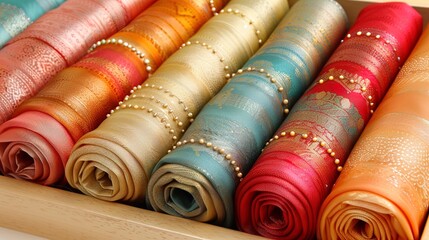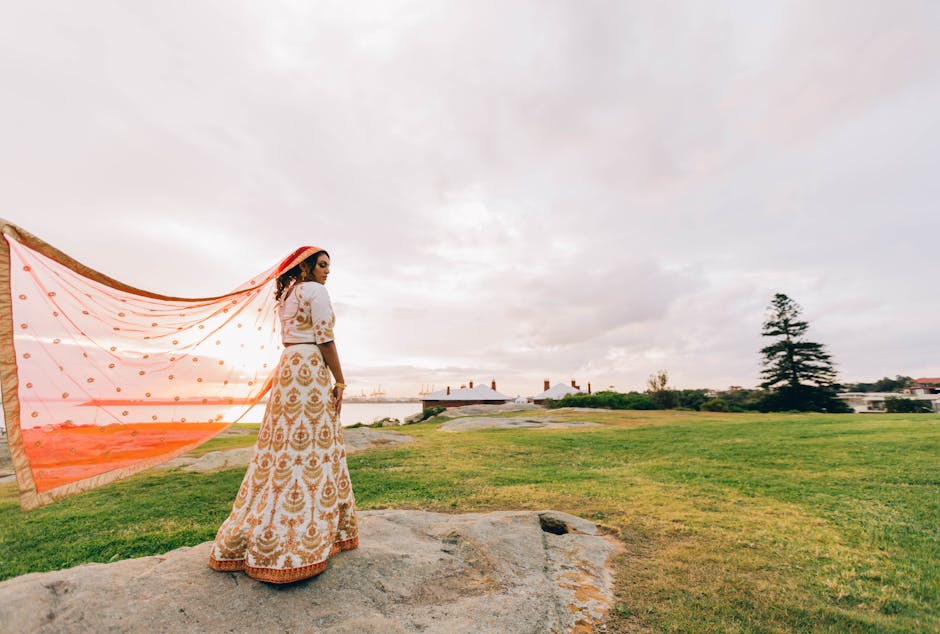Weaving Air: The Lost Art of Ultra-Fine Muslin and Its Modern Revival
Introduction: A Fabric as Light as Air
Envision a cloth so delicate it would fit through a ring—a cloth so light and airy that in ancient times, merchants called it "woven air." That is Muslin—a classic, sumptuous fabric that captivated the imagination of the world centuries ago. From Bengal, ultra-fine Muslin was a treasured item in imperial courts, made by master weavers with unparalleled skill. Although the craft of creating this beautiful material almost disappeared, its contemporary revival is a tale of cultural heritage, creativity, and enduring sophistication.
Muslin is seeing a resplendent revival today as sustainable and heritage fashion is increasingly in vogue. Under the dexterous hands of expert weavers and foresighted companies like Balaram Saha, this scarce fabric is seeing a revival with fashion enthusiasts across the globe in the guise of Muslin sarees, Muslin silk sarees, and Muslin Jamdani sarees.
Balaram Saha: Reviving a Forgotten Treasure
For decades, Balaram Saha Handloom Saree Store has been at the forefront of reviving and highlighting Bengal's most exquisite handwoven fabrics. Based in the heart of Kolkata's Gariahat, Balaram Saha is a name that has become synonymous with quality, tradition, and enduring beauty. Driven by strong values and passion for India's heritage of textiles, the store has turned into a haven for saree enthusiasts looking for genuine, hand-loomed masterpieces.
Particularly noteworthy among its excellent offerings is the Muslin saree line—every garment is a reflection of the weaver's skill and the brand's uncompromising adherence to the traditional craft heritage. Whether it is a filigree-strewn Muslin silk saree, the dense, almost velvet-like density of a rich Muslin Jamdani saree, or an innovative updating of the historic weave, Balaram Saha online presents an expertly sifted selection with contemporary appeal coupled with respect for Bengal's traditions.
The History of Ultra-Fine Muslin: From Royal Courts to Obscurity
Muslin traces its origin to ancient Bengal, especially Dhaka, where it was made from hand-spun cotton known as "phuti karpas." This precious cotton flourished on the banks of the Meghna River and yielded threads so thin they were hardly visible to the naked eye. Woven into filmy fabric by skilled weavers, the Dhaka Muslin was traded with Rome, Persia, and Egypt.
Its prominence remained unabated under Mughal rule. Emperors dressed in Muslin robes, and the fabric became a favorite of royal closets. It was not only a mark of refinement—it was a national heirloom.
But colonial domination ruined this proud tradition. The British industrial process brought manufactured cloth, and the local handloom industry was severely hit. Weavers were forced, their looms smashed, and the making of ultra-fine Muslin declined to the point of extinction.
The Modern Revival of Muslin Weaving
But the good news doesn't stop there. Over the past few decades, efforts from government agencies and private institutions have triggered a revival of Muslin weaving. One of the most encouraging pages of this renaissance has been pioneered by heritage companies such as Balaram Saha saree store, which has taken it as a mission to revive this dying art.
With indigenous cotton, natural dyes, and handlooms, the artisans funded by Balaram Saha Handloom Saree Store are re-learning the art of their forefathers. The outcome? Beautiful Muslin sarees that are as light as air but tough and long-lasting.
This fresh wave of Muslin fashion is a fusion of old-world beauty and modern chic, making it perfect for weddings, celebrations, and even as a daily wear for those who adore luxury in simplicity.
Types of Muslin Sarees You’ll Find at Balaram Saha
1. Traditional Muslin Saree
These are authentic reproductions of vintage Muslin, usually in muted colors such as ivory, off-white, or pastel shades. Their charm is their simplicity—no heavy ornaments, just the enchantment of hand-spun cotton and skilled weaving.
2. Muslin Silk Saree
With the softness of Muslin blending with the richness of silk, such sarees are ideal for special occasions. They have a natural sheen, light drape, and expensive feel that enchant both the young and the elderly.
3. Muslin Jamdani Saree
Jamdani is a weaver's technique applied using supplementary motifs in the weft. Jamdani on Muslin combines to create some spectacular results. The sarees tend to feature elaborate floral or geometric patterns looking as if suspended on the fabric's surface.
All types of sarees can be found in Balaram Saha online stores as well as at the historical Balaram Saha Gariahat store and are thus well within reach for saree aficionados worldwide.
Why Muslin is Perfect for Modern Fashion
Breathability and Comfort
Muslin sarees are incredibly breathable, a boon for India's hot and humid weather. From a high-profile event to a home workday, Muslin's lightness keeps you comfortable and looking stylish.
Sophisticated Aesthetics
The very excellence of Muslin imparts a dreamy charm. Its tissue-like texture is ideal for striking drapes and pleats, so it's highly sought after by designers and stylists alike.
Eco-Friendly and Sustainable
Made by hand from natural fibers and dyes, Muslin sarees are a sustainable fashion option. As more people become aware of the ecological footprint of fast fashion, Muslin is an environmentally friendly, stunning option.
Timeless Investment
In contrast to fashion-forward clothing, a Balaram Saha Muslin saree is a timeless investment. Because it can be handed down as an heirloom—both in terms of emotional connection and beauty—its timeless nature gives it added value.
Supporting the Artisans: The Soul Behind Every Saree
Each Muslin saree is a work of love. Weeks, even months, are spent spinning the yarn, setting the loom, and weaving the fabric. Behind each thread is a tale of hope, heritage, and resilience.
By shopping at the Balaram Saha Handloom Saree Store, the buyer directly supports such rural crafters. Not only does the store pay fair wages but also provides training to younger generations to carry on this valuable art form.
How to Style a Muslin Saree
-
Office Look: Pair a pastel Muslin saree with a minimal blouse and oxidized jewelry for a chic professional vibe.
-
Festive Look: Go for a Muslin silk saree with zari border and team it with a statement necklace and clutch.
-
Contemporary Look: Drape a Muslin Jamdani saree with a crop top blouse and sneakers for a fusion twist.
Muslin's lightweight nature makes it easy to experiment with pleats, pallu styles, and blouse pairings—allowing endless room for creativity.
Balaram Saha Online: Heritage at Your Fingertips
Can't go to Balaram Saha Gariahat in person? No problem! The Balaram Saha online website brings its extensive Muslin saree collection to your doorstep. With product descriptions, high-resolution photos, and convenient delivery options, it's never been simpler to own a piece of Bengal history.
Browse categories like:
-
Muslin saree
-
Muslin silk saree
Every saree ordered online comes with the promise of authenticity, tradition, and unmatched elegance.
Conclusion: A Legacy Woven Back to Life
The history of Muslin is more than fabric—it's about identity, heritage, and endurance. Due to visionaries such as Balaram Saha, this iconic art form is once again finding its place in the world of haute couture. From ancient royal courts to contemporary fashion catwalks, the journey of Muslin is pure magic.
Whether you're a saree aficionado, a fashion minimalist, or someone who values genuine craftsmanship, a Muslin saree by Balaram Saha is not just a garment—it's a statement, a legacy, and a nod to the craftsmen who translate dreams into cloth.
Then go ahead—uncover the lost art, luxuriate in the softness, and rejoice in the heritage with Balaram Saha's Muslin masterpieces.





